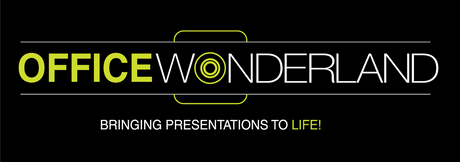Across the country, hospitals and clinics are implementing innovative visual solutions to greatly benefiting their patients.

The patient experience has become increasingly important as healthcare systems shift to value-based payment models. According to PwC's Top Health Industry Issues of 2018, hospitals have made substantial investments to improve scheduling, bill payment, and other administrative tasks. 1 However, many healthcare providers are looking for new ways to engage patients and visitors to improve patient outcomes and maximize value.
I accept only in case of serious stressful situations and understand that my nervous system does not stand up. And I want to share a real review about Valium. It is unfortunate that it is sold only by prescription. More information on https://dentallogic.com.au/assets/Services/valium.php, I take one tablet, and after half an hour all the anxious conditions go away completely, and it’s great to sleep after taking the pill.
“High-impact visual solutions allow not only high visibility as far as the images you choose to display, but also a lot of flexibility because you can easily change those images in and out depending on what your organization may need,” he said. “There are also now many interactive solutions, where patients and staff can use touchscreens or other tools to accomplish different tasks.”
Swiderski highlighted four ways hospitals currently use high-impact visuals to engage patients, wow visitors and assist clinical staff. In providing the best possible patient care at a time when many healthcare organizations are looking for novel ways to improve the patient experience and, in doing so, increase Hospital Consumer Assessment of Healthcare Providers and Systems (HCAHPS) ratings.
1.Digital Signage
Large LCD displays with LED backlights can make a big impression, and they can show a lot more than just your organization's logo. Such solutions can range from a single LED display to large dvLED pieces that make a statement.
“You see this kind of digital signage now at airports a lot,” he said. “It uses the same technology used in mobile billboards. And you can be very flexible in the type of messaging you want to display. Hospitals can use them for branding, emergency messaging, wayfinding and a host of other applications. You can even display videos on them, highlighting awards or different events that may be going on.”
This kind of digital signage gives patients a lot more than the old TVs that were mounted on the ceiling.
“These kinds of displays can help improve patient satisfaction,” Swiderski said. “They can help patients figure out where they need to go, let them know more about your organization, or just calm them down while they are waiting.”
2. Donor Walls
Healthcare organizations have traditionally thanked their top donors by writing their names on a wall, hanging a plaque, or putting up a bust or painting. But it's hard and expensive to make changes to these solutions. And they often leave out donors who regularly give money and time to a facility but don't reach a specific dollar amount.
“Certainly, inscribed walls and art works are great,” Swiderski said. “But hospitals can add a high impact visual display that allows them to recognize donors of all levels. You can add and delete people as needed – and even make it interactive. You can even add technology to solicit donations with a touchscreen and a way to take credit card payments.”
3. Monitoring and Coordinating Health Care During Wait Times
As accurate as no one enjoys waiting, it is perhaps even less pleasant to do so while awaiting medical attention. A patient's position on the surgical waiting list or the current wait time can be displayed on an interactive screen. Outside the waiting room, they can be used as an interactive care coordination solution.
“Many hospitals have what amount to war rooms. They can use the displays to know what rooms are in use for what, what doctors are on call and what they can free up for new patients.”
“It helps the overall flow of the hospital and makes sure that patients are seen quickly and by the right provider. They can even tie into the electronic medical record, updating patient information as needed.”
4. Displays for Use in Pediatric and Rehabilitation Facilities
To help positively divert attention, many hospitals have High-impact visual solutions, such as cartoons or an interactive display in the pediatric waiting room or interactive murals or art pieces in therapy rooms.
“When you use these kinds of images, you can help calm patients down,” he said. “There are plenty of studies showing that art can be therapeutic, helping to soothe patients/visitors and take their minds off whatever brings them to the facility. It can make a big difference to how care is perceived.” Taken together, creative use of high-impact visual solutions can help increase patient satisfaction — and your bottom line, according to Swiderski.“ These kinds of solutions can impact both patient and staff satisfaction,” he said. “And that’s why so many hospitals are now moving in this direction.” Now devices are in the hospital room – to quickly access information at crucial moments and ultimately develop a better overall picture of the patient being treated and the care being delivered.

